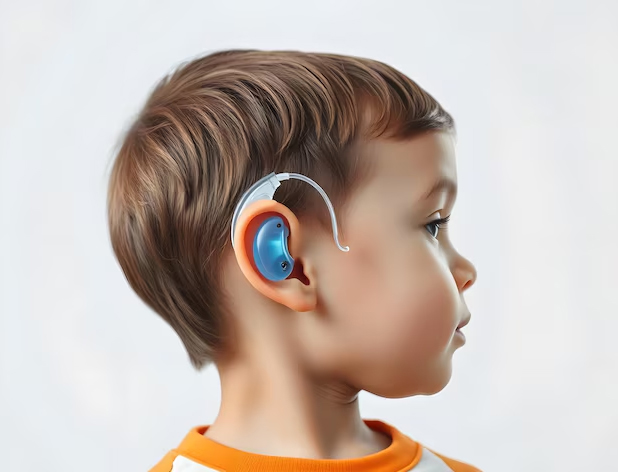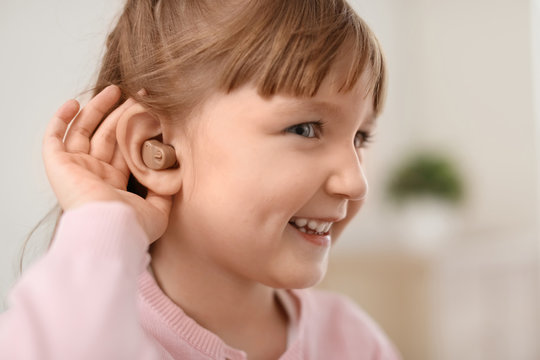Hearing aids for children
Hearing Aids tips for Children and Parents
If your child has been diagnosed with hearing loss, pediatric hearing aids can play a crucial role in their speech development and educational success. Learn everything you need to know about children’s hearing aids.
Every year in the U.S., at least 2 out of every 1,000 newborns are diagnosed with hearing loss or deafness through universal newborn hearing screening.
If your child develops hearing loss later in childhood due to infections, medication side effects, genetic conditions, or exposure to loud noises, it’s crucial to take action. If you suspect hearing loss, visit a pediatrician or an ear, nose, and throat (ENT) specialist immediately and request a referral to a pediatric audiologist. These professionals are experts in diagnosing, treating, and providing follow-up care for children with hearing issues. Learn what steps to take if you think your school-aged child or teenager might have hearing loss.
About 40 percent of children with hearing loss exhibit another disability.
worldwide
40%

How young can kids wear hearing aids?
Hearing aids can be fitted for babies as young as a few months old. As children grow, regular hearing exams and updated hearing aids will be necessary, as recommended by your hearing care provider.
Importance of Hearing aids for your child
- From birth to three years old, children’s brains experience rapid development. Consistent exposure to sound is crucial for forming normal brain pathways for hearing, speech, and language.
- Early listening and speaking are essential for language development. However, when children first learn a language, it isn’t taught like a school subject. Instead, language is naturally absorbed. Children learn words, spoken syntax, and language structure through continuous exposure. For children with hearing loss, this incidental learning needs to be enhanced with speech and language therapy focused on auditory input.
- Consistent hearing is also vital for infants and toddlers to bond with their parents. It builds trust and fosters a sense of a predictable, reliable world.
Hearing aid tips for parents
Ensuring that your child consistently wears their hearing aids can be challenging, especially for toddlers or those who haven’t worn them regularly since infancy. If your child resists or frequently removes their hearing aids, here are some strategies to make them more comfortable:
- Engage in Fun Activities: Put the hearing aids on your child while engaging in a fun activity together. This distraction can help them be less interested in pulling the aids off.
- Use a Soft Headband: A soft headband can be secured over the hearing aids, but ensure that the microphone remains uncovered.
- Attach with Clips: Special clips can attach the hearing aids to your child’s clothes. Even if the aids are pulled off, this prevents losing the expensive devices.
- Consult Your Audiologist: Your audiologist can recommend suitable headbands and clips to help keep the hearing aids in place.
If your child is new to wearing hearing aids or reluctant to wear them, children’s books about hearing loss can help them emotionally process the experience.


A hearing aid routine
- Developing a daily routine for putting on your infant’s or child’s hearing aids is essential
- Create a positive experience by cuddling and holding your child while you put the hearing aids in, helping them form a positive association. If your curious child pulls the hearing aids off, gently but consistently replace them to reinforce that they belong there
- If your child frequently pulls on their hearing aids or ears, it could indicate discomfort from an ill-fitting earmold. Consult your child’s audiologist immediately to determine if new earmolds are needed. For children who are reluctant to wear hearing aids or are new to them, consider reading children’s books about hearing loss to help them emotionally adjust
Daily checks
- Daily checks of children’s hearing aids are essential, especially for those too young to communicate issues. Perform a listening check, ensure the battery is functional, and inspect the hearing aids for debris and moisture. If you can’t hear sounds through the hearing aids, your child won’t either.
- Additionally, perform a visual inspection before each use. Ensure the hearing aids and earmolds are clean and dry. If the earmold is dirty, disconnect it from the hearing aid. Use a bulb syringe to remove moisture from the earmold or tubing and clean any debris with a tissue or disinfectant wipe. Once the earmold is completely dry, reconnect it to the hearing aid and place it back in your child’s ear.
